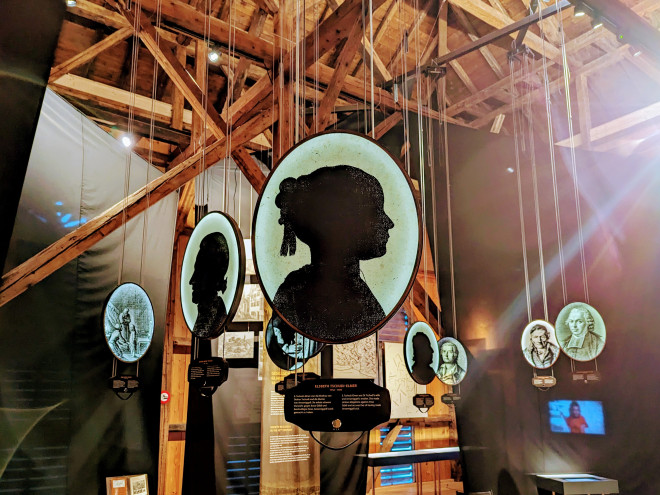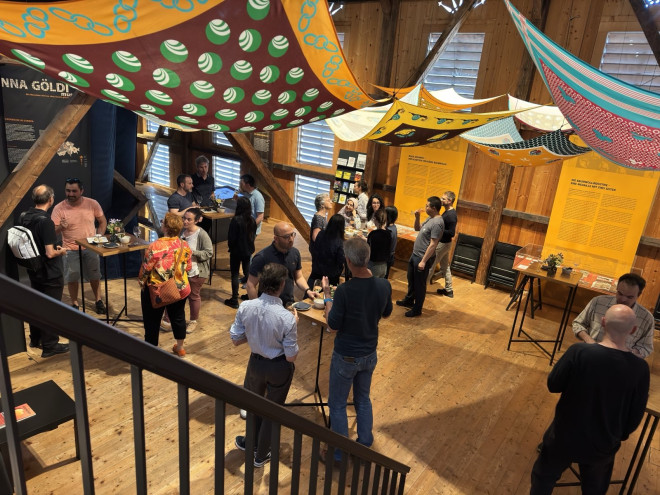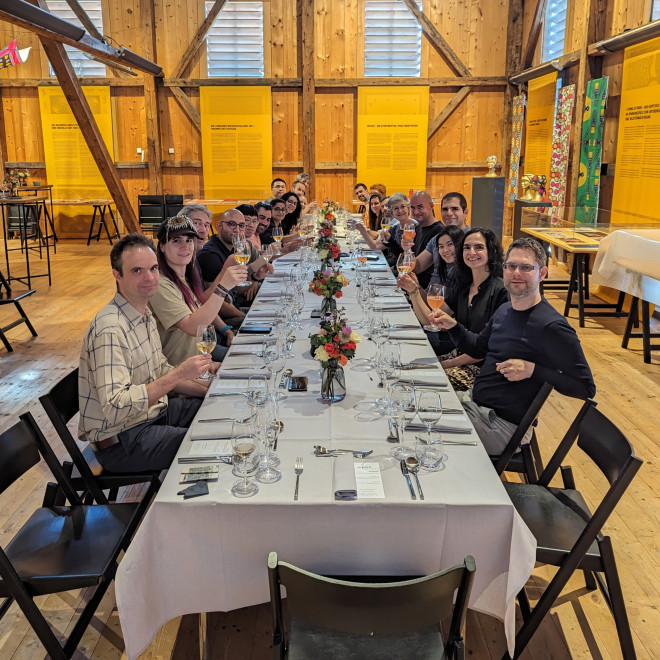Jun 7, 2024
2022 Zurich43 Retreat Follow Up: Visit at Anna Göldi Museum
We had the pleasure of visiting the Anna Göldi Museum this week, as a follow-up to our 2022 Zurich43 retreat on "Witches vs. Bill Gates: Conspiracy Beliefs & the Role of Science — Implications for Gender Bias & Inequality".

Anna Göldi Museum rooms.
The museum is located in Ennenda, Glarus CH, in the upper floors of a “Hänggiturm” – a hanging tower where dyed and printed fabrics were hung to dry – that dates to the heyday of the Glarus textile industry in the 19th century. The huge, historic, and elegant exhibition space opened in 2017 with the aim to preserve the memory of Anna Göldi, who is remembered as the last witch to be tried and executed in Europe. The museum, which is operated by the Anna Göldi Foundation, additionally has a broader goal to promote and protect human and fundamental rights and to combat discrimination, racism, and arbitrariness.
Anna Göldi was accused of witchcraft and executed by beheading in Glarus, Switzerland, in 1782. The trial that led to her conviction was, for the time, extraordinarily well documented. The Anna Göldi Foundation was established by the late Dr. Walter Hauser, who discovered documents in his research indicating that Göldi’s trial, torture, conviction, and execution had sparked outrage throughout Europe. Hauser became an advocate for Anna Göldi’s rehabilitation, and she was officially exonerated by the Glarus cantonal government in 2008.
Our visit included a guided tour of the Anna Göldi exhibition, followed by an Apéro and dinner, provided by Sirana Catering, in the exhibition hall. During dinner, Walter Hauser’s book, “Anna Göldi – geliebt, verteufelt, enthauptet” was presented, exploring the historical framework and the impact on politics, justice, and society of Anna Göldi’s conviction, the last documented witch trial in Europe. Dinner discussions ranged over gender differences through history, healers and exorcists, why witches were depicted flying on brooms, and current conspiracy beliefs. Our discussions included the social and cultural development of power abuse, high social influence, slavery, human rights, and gender equality. Although much remains to be done to improve human rights, all in all, society has thankfully progressed a great deal since the 18th century.

The museum is located in a “Hänggiturm” from the Glarus textile industry, where dyed and printed fabrics were hung to dry.

Dinner prepared in the exhibition hall.



